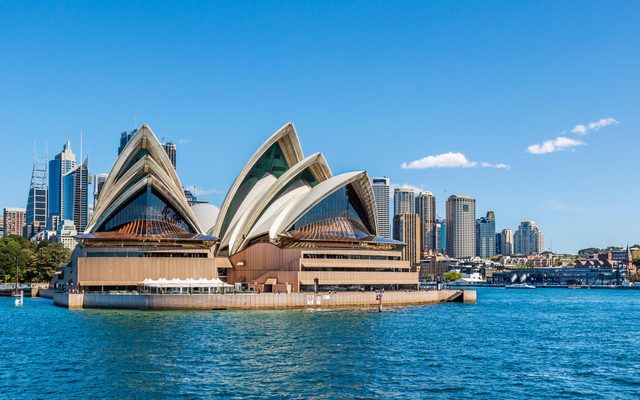This article is from the Australian Property Journal archive
ARCHITECTS and developers in Victoria who “put in an effort and take on more personal risk” and design projects with good design and sustainability will be assisted by the Victorian government in fast-tracking their builds.
Victorians will also get a say in nominating nominate “great buildings they live in or love”, which they think meet good design criteria and deserve to be replicated across the state.
In that latest of its housing policy announcements blitz, the Allan government unveiled the Great Design Fast Track, which will introduce a new, fast-tracked pathway for “buildings with homes that meet the test of build quality, good design and sustainability – so developers can build better homes without the additional costs and delays associated with projects that might look a bit ‘different from the norm’.”
The scheme will be developed by Minister for Planning Sonya Kilkenny to focus on townhouse and apartment projects of three to six storeys in height, and is intended to apply work in a similar way to the current Development Facilitation Pathway (DFP) that exists for more significant housing projects.
Minister Kilkenny and Member for Albert Park Nina Taylor visited the six-storey Ferrars & York apartment building in South Melbourne to announce what the government said is a “turbocharged plan for Victoria’s future homes that will drive a new era of affordable architectural heritage in this state”.
“Through this fast track, Victoria can give a stronger arm to architects and developers who put in an effort and take on more personal risk by building projects that look great and add lasting value to streets and communities,” the government said.
“They should not be punished by a culture that quashes creativity and sustainability.
“All homes are beautiful, but the system shouldn’t be set up to reward buildings that detract from Victoria’s stand-out history of architectural diversity or won’t stand up in quality or sustainability.
Kilkenny said the community “deserves affordable buildings that look great on the outside and feel solid as a rock on the inside. Our plan is for more grand designs but without the grand cost”.
The government will expand its State Design Book of “future homes” – projects that are planned on paper alongside artists’ impressions but don’t yet exist – by including the best examples of “good, affordable designs that are already in the ground, home to Victorians and loved by locals”.
The Design Book is still on track for completion by the end of this year, and will include developments that are already complete to be a showcase of buildings that were realistic and viable to deliver.
Eligible designs will be required to encourage sustainable, family friendly and accessible homes, with communal spaces and gardens. As an example, the government cited the “beautiful” Balfe Park Lane project in Brunswick East, which delivered 72 one, two, three and four-bedroom apartments with a big communal backyard.
Balfe Park Lane was designed by Kerstin Thompson Architects, who said the development “prioritises amenity, housing diversity, sustainability and community building”.
The dwellings types have dual aspects, with outlooks either to Balfe Park, the courtyard garden or adjacent streets, while generous outdoor spaces, proximity to public park and laneway linkage, “encourage resident interactions and areas to cultivate community connections”. The dwelling designs achieve high level compliance in the Livable Housing Australia’s Livable Design Standards.
The design book will also be thrown open to the public for them to nominate “great buildings they live in or love – which they think meet the good design criteria and deserve to be replicated across the state”.
The government will secure state -owned land for innovative “demonstration” developments to stand on, which will show off demonstrate high quality design, liveability and sustainability, including modern methods of construction. This will be built into the expression of interest process for industry, and with the aim in mind of Victorians having a chance to explore the buildings. The demonstrator buildings can then go on to become homes for Victorians to buy or rent.
Samantha Reece, CEO of Australian Apartment Advocacy (AAA) stated that there was a dire need for affordable homes, with the apartment market tending to focus on premium projects in these uncertain construction times.
“This is good news for buyers and developers who are focused on delivering three-bedroom apartments in the $650,000 to $750,000 price range,” Reece said.
“However, the government needs to match this with Home Warranty Insurance, which currently is capped at three storeys.
“The last thing we want to see is families take the option of an apartment over a standalone home and then have to cop the cost of expensive defects because the builder has gone bust.”
Reece also welcomed the government’s plans to fast-track affordable apartment delivery from 12 months to three.
Victorians to vote on parks
Meanwhile, the government yesterday also announced the Pick My Park program that will put $30 million in grants towards creating and upgrading more green spaces in growing suburbs that are building more homes. Victorians aged 16 and over will be able to propose ideas for new parks or park upgrades and then submit them to the public for their vote.
As part of the eligibility criteria, ideas will only go to a vote if they are in established areas that are growing, particularly those that have less access to open space.
Yesterday’s announcements follows last week’s raft of policy unveilings that included naming the first 25 train and tram activity centres around Melbourne – which will ultimately total 50 – that will be earmarked for higher-density housing, which followed an initial activity centres program announcement in August naming 10 pilot suburbs, as well as the release and rezone surplus state-owned land near trains that will unlock around 9,000 homes across Melbourne and the regions, and the state’s largest ever single release of greenfield land for development, to deliver 180,000 homes.




